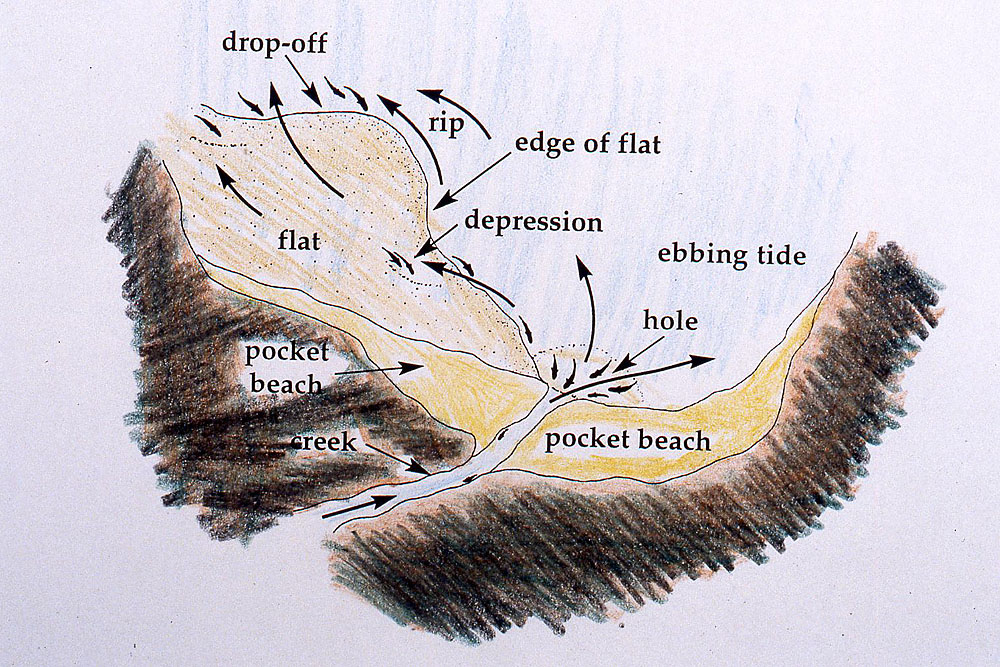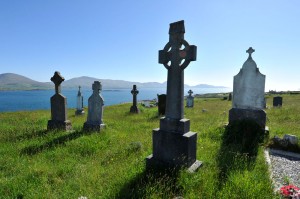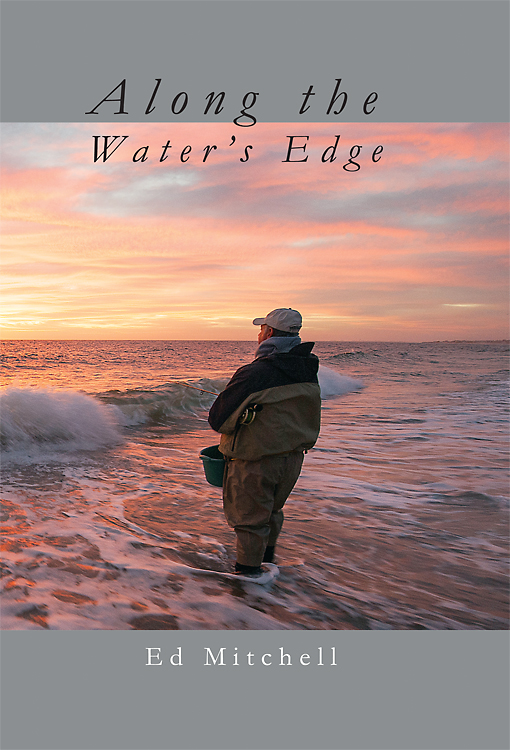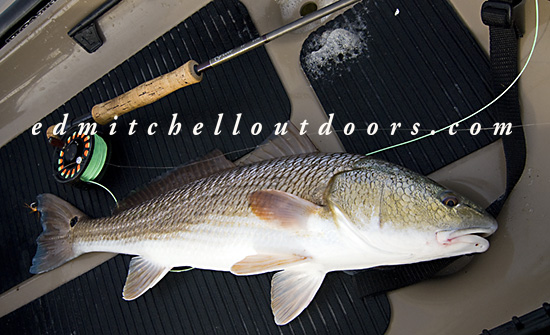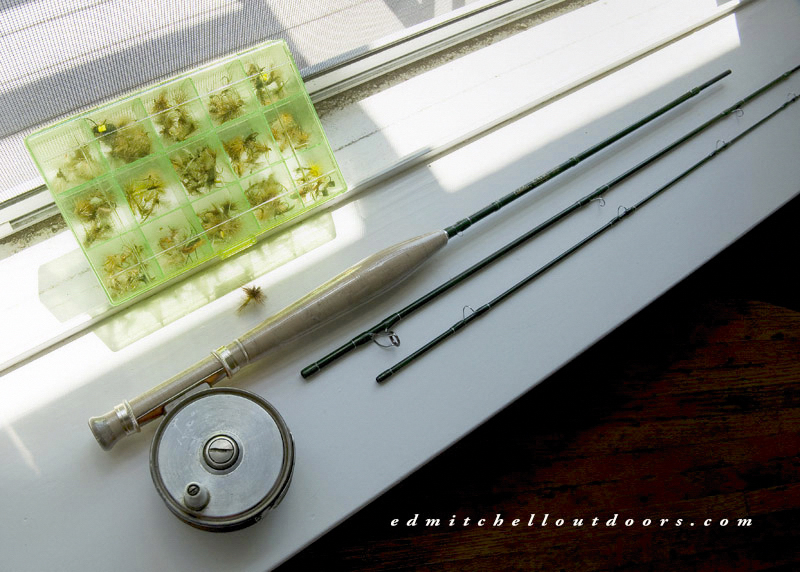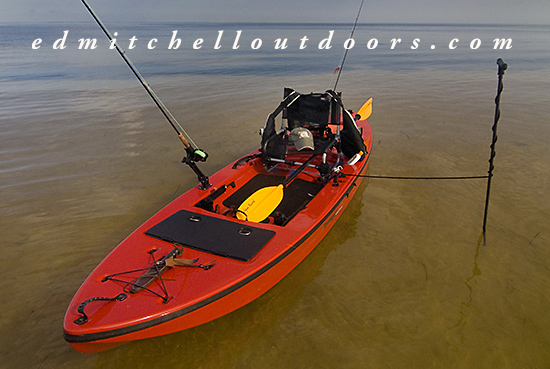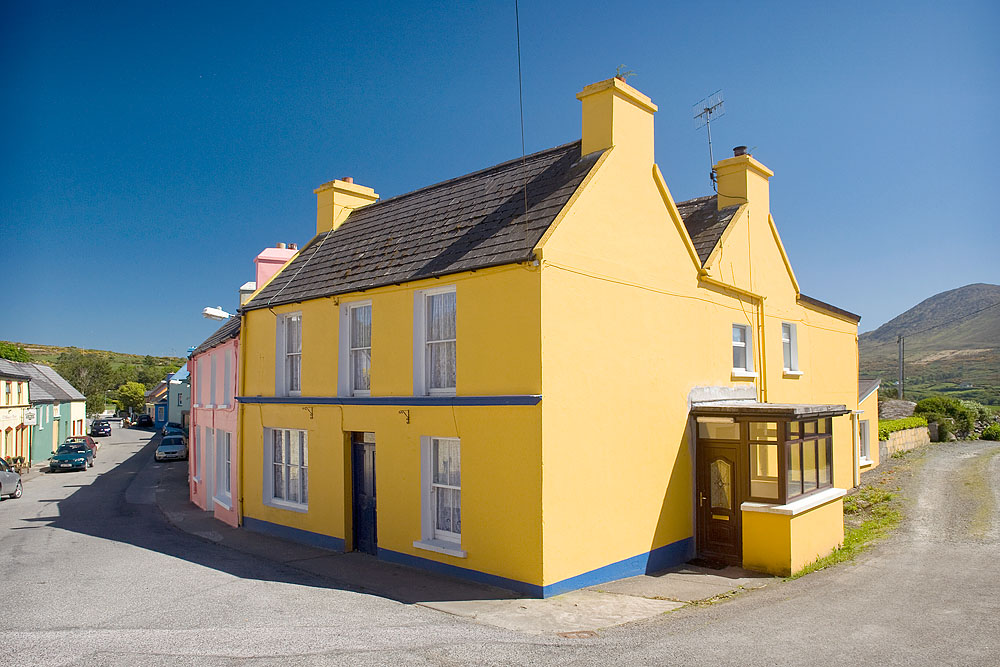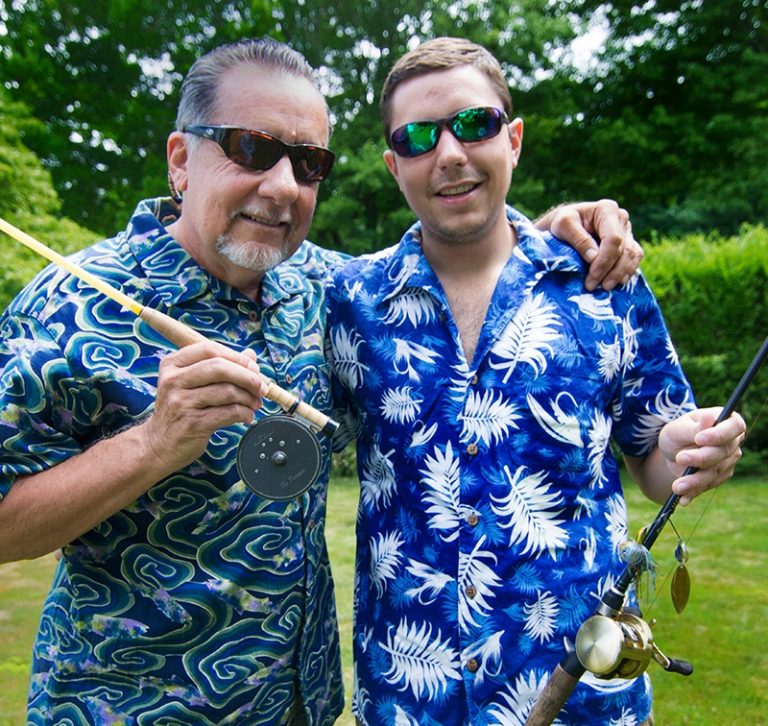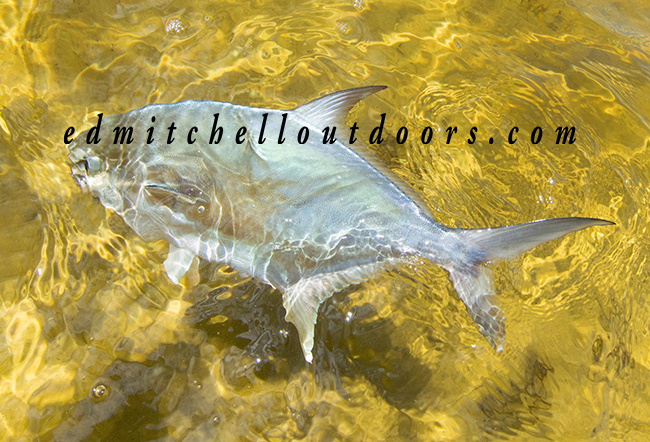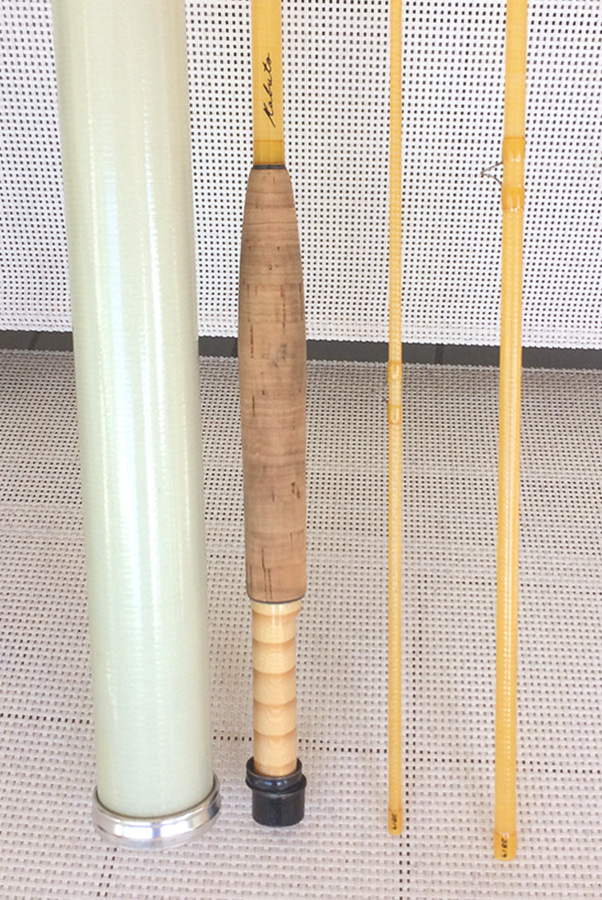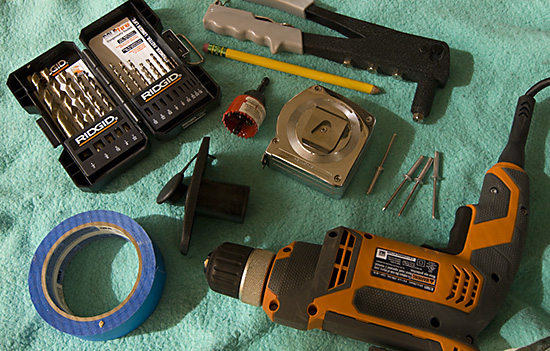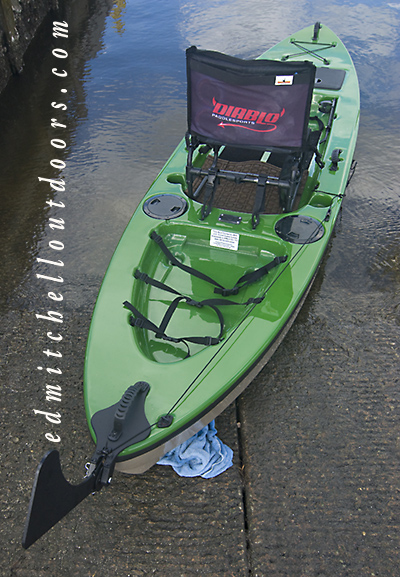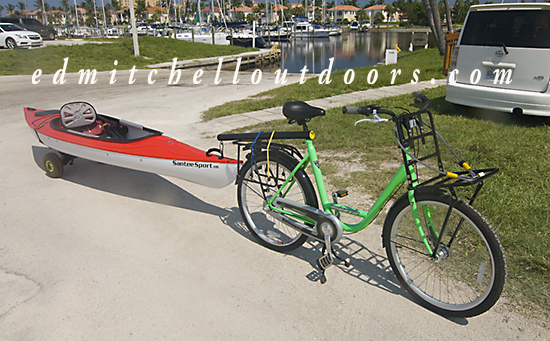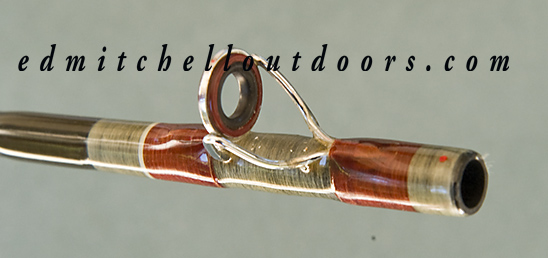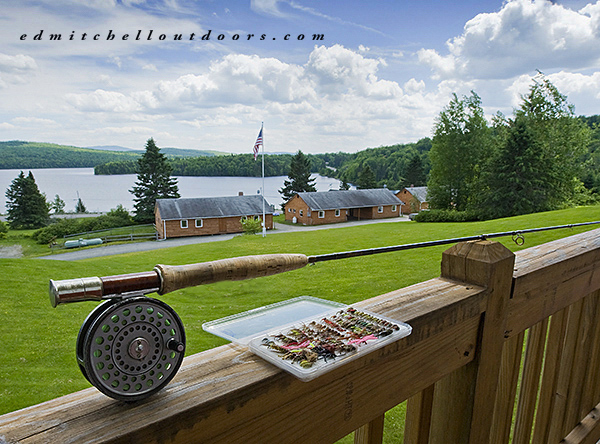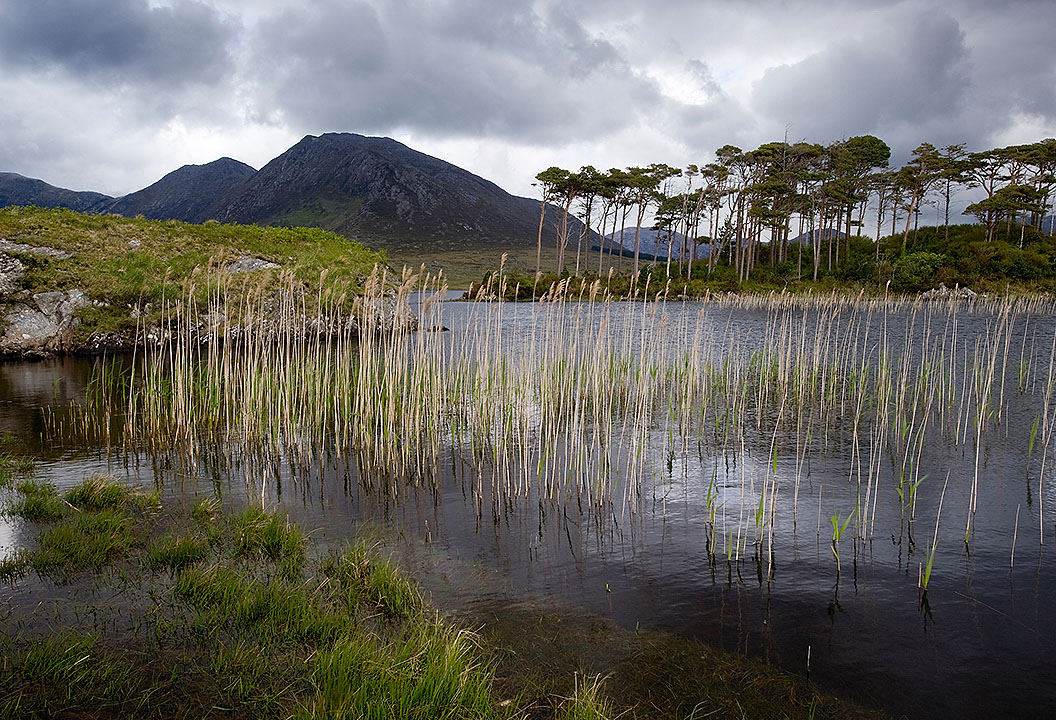Pocket beaches are great. What is a pocket beach? Well, here in the northeast, it refers to a small, often sand, beach surrounding a estuary mouth in the back of a bay or cove.
Given a pocket beach’s location, it is reasonably protected from wind and wave. That’s one plus; here’s another. The estuary mouth provides a steady supply of plankton, which in turn attracts forage fish. And it really doesn’t matter whether that estuary is a small river, a tidal creek, or a trickle exiting a culvert. They all call fish. And the estuary may also have a seasonal herring run and possibly a worm hatch. Nice.
Beyond offering plankton, the estuary mouth provides additional fishy opportunities. Generally there is current here, especially on the ebb. And we all know that a rip line is a fish magnet. In addition, that current may create bottom structures that hold fish. You might find a delta with a hole or drop-off. And if the current is fairly strong, a sandbar may develop adjacent to mouth.
When fishing the mouth, an ebbing tide is usually the best choice. But an incoming tide, during low light, can be super. As the water level begins to rise, striped bass may stack up just outside the mouth, and then as the water climbs higher, those fish may ride up inside the estuary. Now the action is right at your feet.
If your pocket beach has a sandbar like the one in the drawing, be sure to give it some attention. If the water is clear, you may be able to sight-fish. When there is current, focus on the bar’s deeper edge. Forage fish, such as silversides, will feed here and you can expect bass and blues to take advantage of it. This bar is also a perfect location for schools of sand eels to set up house. And sand eels draw striped bass like a moth to a flame

